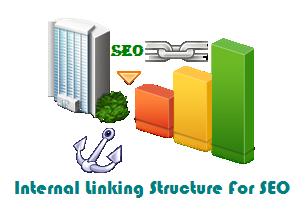Internal linking structure is crucial for every blog’s search engine optimization. If you’re thinking differently then you’re just fooling yourself.
Page Contents
Two Sides To Proper SEO For Website Or Blog
As you probably know, there are two sides to proper SEO:
- Things done within your site (on-page SEO)
- Things done outside your site (off-page SEO)
Off-page SEO : It is all about link building, becoming popular on the internet, and spreading the word about your content wherever you can (well, maybe not “wherever,” but in the important places for sure).
On-page SEO : This on the other hand, is all about making your site’s structure as optimal as possible. You need to use proper page titles, proper URLs, error-free HTML structure, and … wait for it … proper internal linking structure, also read more about Importance Of Do-follow Back-links in SEO.
What Is Internal Linking ?
First of all, what’s internal linking? In layman’s terms, internal linking is when you link to another page that’s on the same website.
Why Is Internal Linking Important For SEO?
Quite simply, links are links. No matter if they are on other websites or on your website Google still sees them and takes them into account when constructing your ranking. (Of course, external links are still much more important.)

Internal Linking Structure
Getting Internal Linking Right
The first thing to do would be to start with a good theme for your WordPress site. If the theme you’re using is not of high quality then it’s likely to contain some errors (like HTML error, for example) that will stand in your way to high rankings.
When you decide to do business with a respected premium WordPress themes store you can rest assured that the themes they offer are created by professionals who know their craft. Also, such themes are always highly customizable and can be adjusted to anyone’s requirements.
Writing With Internal Linking In Mind
Whenever you write a new post you should keep in mind your other content and always find a way to reference some of your previous work.
Your task as a website owner is to make sure that a visitor stays on your site and browses as many pages/posts as possible. In order to make it happen you have to use associations and make various pieces of content relevant to each other.
In a sentence: Make sure to write within one topic range, writing about two hundred different things rarely pays off.
Internal Linking Ways
There are three ways of including internal links into your content:
- Doing it manually
- Doing it automatically
- Doing it semi-automatically
1) Internal Linking Manually
The first approach is pretty self-explanatory. What you do is go to the WYSIWYG editor in WordPress and include various links manually into your content.
The important thing to remember here is to always use relevant anchor texts – just like you would for external link building.
In-content links are much more valuable than sidebar or menu links (SEO speaking). That’s why you should always search for an opportunity to link to 2-3 of your previous posts from within the content of your new post.
2) Internal Linking Semi-Automatically
It’s about time to introduce some plugins. Let’s start with one called RB Internal Links .
It’s free and it lets you include internal links to other posts and pages by using a simple shortcode.
The shortcode looks like this:
[intlink id=THE-ID]
“THE-ID” is a placeholder for the ID of the page or the post you want to link to. You place the shortcode wherever you like when working in the WYSIWYG editor.
The plugin uses the title as the anchor text for the link, so in most cases it should provide good SEO value (if you’ve created your titles with SEO in mind).
3) Internal Linking Automatically
There are two plugins that will help us with this
SEO Smart Links
The plugin goes through your pages, posts, and comments, and searches for keywords to link automatically. To put it simply, it decides what should be linked to what on its own.
Also, you can use it to create custom pairs of URLs and keywords that will get linked automatically as well (good for affiliate links).
Yet Another Related Posts Plugin
This is one of the most popular related posts plugins.
It processes your content and tries to find posts that are somehow related to the post you’re currently working on. You can set the score above which a post is considered to be related.
As the result, the plugin displays a list of related posts near the bottom of the page. Every link is anchored with the post’s title.
What other ways of improving the internal linking structure of your WordPress blog do you use? Feel free to share, we’re curious to know.
 Tricks Window Technology Zone – Complete Technology Package for Technology News, Web Tricks, Blogging Tricks, SEO, Hacks, Network, Mobile Tricks, Android, Smartphones etc.
Tricks Window Technology Zone – Complete Technology Package for Technology News, Web Tricks, Blogging Tricks, SEO, Hacks, Network, Mobile Tricks, Android, Smartphones etc. 


